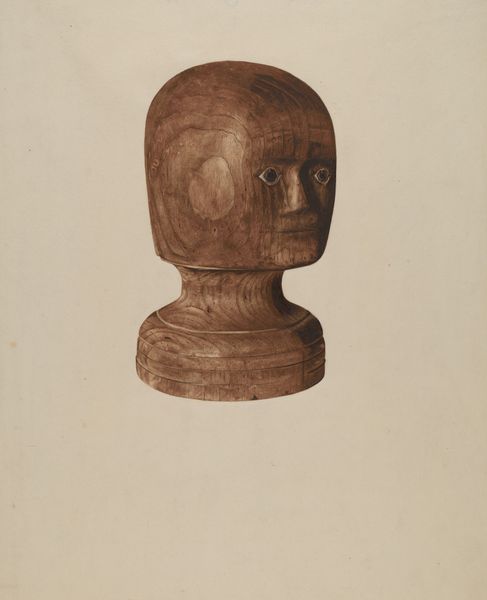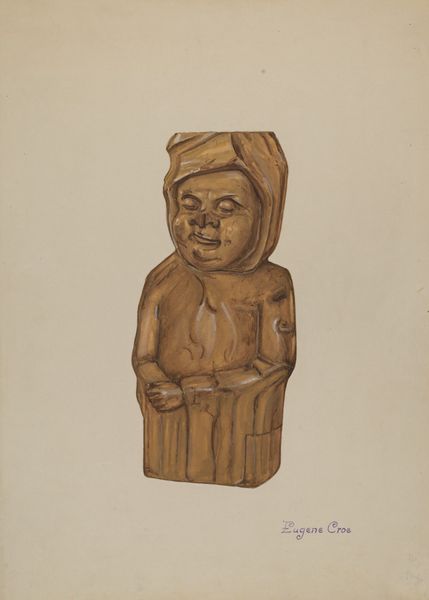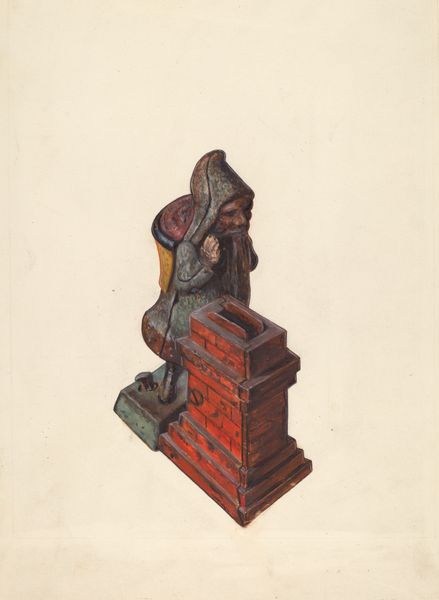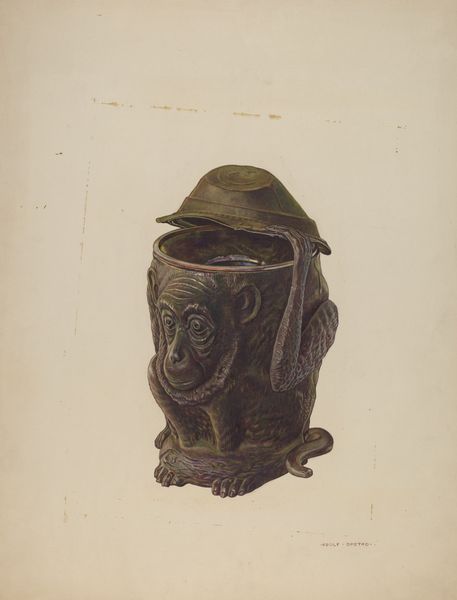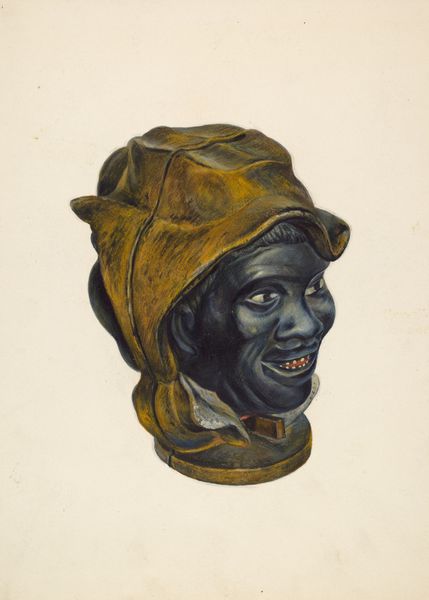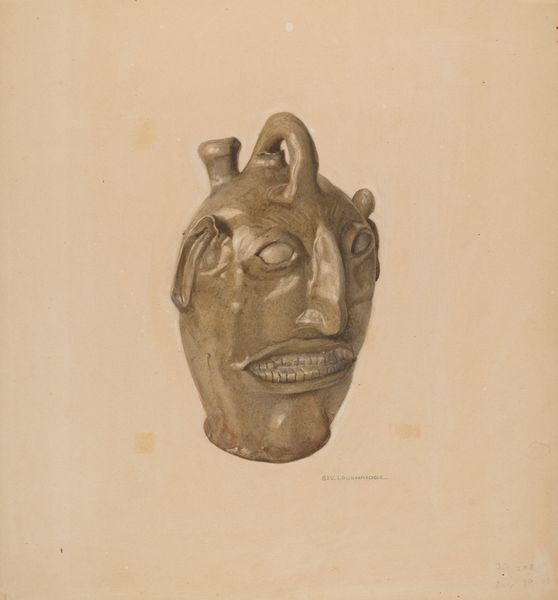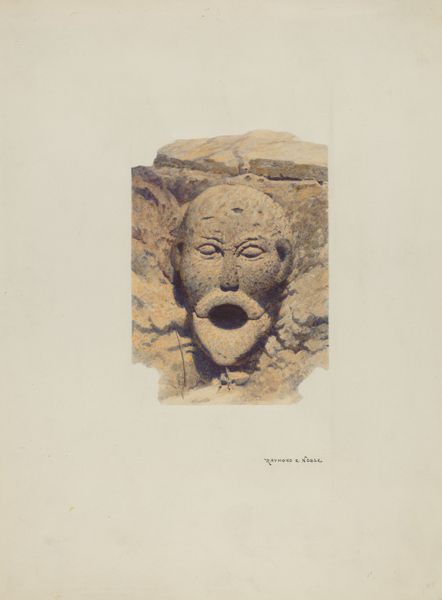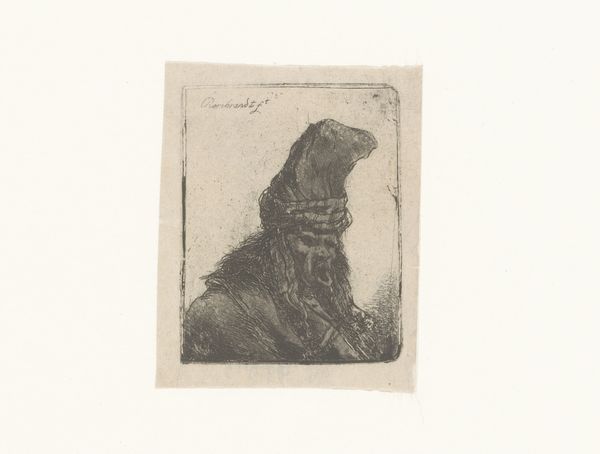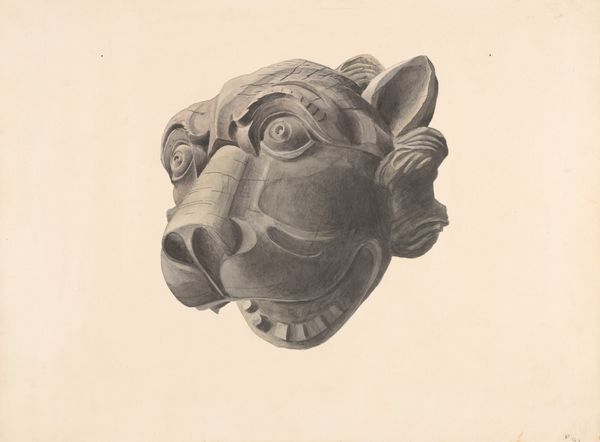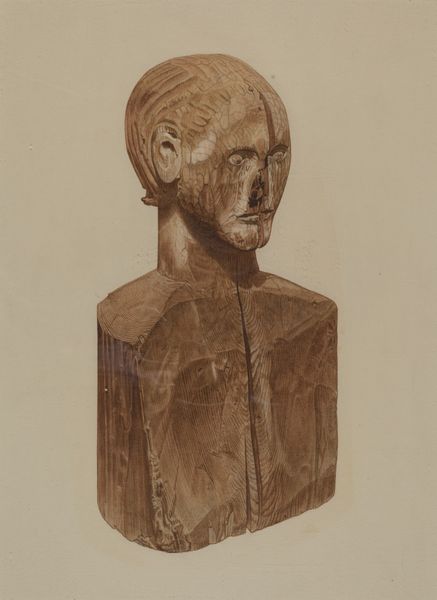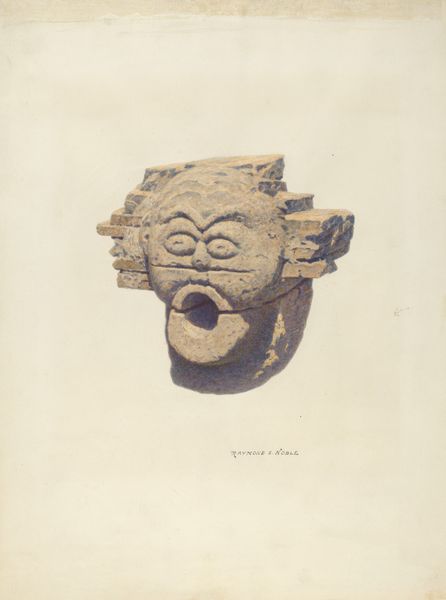
drawing
#
portrait
#
drawing
#
figuration
#
portrait drawing
#
watercolour illustration
Dimensions: overall: 29.6 x 21.5 cm (11 5/8 x 8 7/16 in.) Original IAD Object: 4 1/2" high; 1 3/4" wide
Copyright: National Gallery of Art: CC0 1.0
Editor: Here we have Paul Poffinbarger’s "Iron Negro Bank," from around 1940. It seems to be a watercolour illustration of, well, an iron bank shaped like a Black person's head. It's quite striking and honestly, a bit disturbing. What do you see in this piece? Curator: What immediately stands out is the complex historical context surrounding such an object. These "Negro Banks," were popular in the early 20th century and often depicted caricatured, racist images. Understanding this image requires confronting the painful history of racial stereotypes and economic exploitation. What does it mean to take an object laden with this history and depict it as art? Does the artist offer critique, or simply replicate? Editor: That's... sobering. I hadn't considered the full weight of the history. It does make me wonder about Poffinbarger’s intent. The rendering itself feels almost detached, like an archaeological study. Curator: Exactly. And this detachment raises questions. Does the artist’s technical skill – the precise rendering of the iron, the careful use of watercolour – further normalize a dehumanizing object? Or does the act of artistic representation offer a chance to re-examine the object and the cultural values that gave rise to it? Can we separate the artistry from the inherently racist object it represents? Editor: It’s tough to say. It’s definitely not a straightforward celebration. Maybe it's a commentary on the commodification of Black people, even if unintentional? Curator: Precisely. Considering the broader social context is crucial. These banks encouraged saving, but at the expense of perpetuating harmful stereotypes. So the image allows us to examine the intersection of race, capital, and representation. It speaks volumes about the values, anxieties, and power dynamics of that era, doesn't it? Editor: Definitely. I came in seeing just an illustration, but now I see a painful artifact prompting necessary conversations. Thanks for untangling that complexity. Curator: It is in these critical dialogues that we unearth the significance, for art must address the totality of experience in history, memory, and the present moment.
Comments
No comments
Be the first to comment and join the conversation on the ultimate creative platform.
